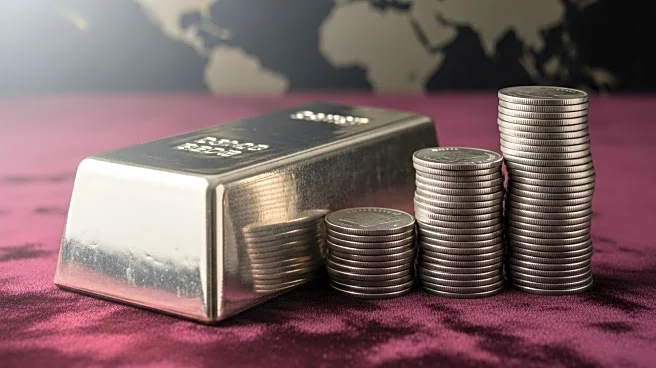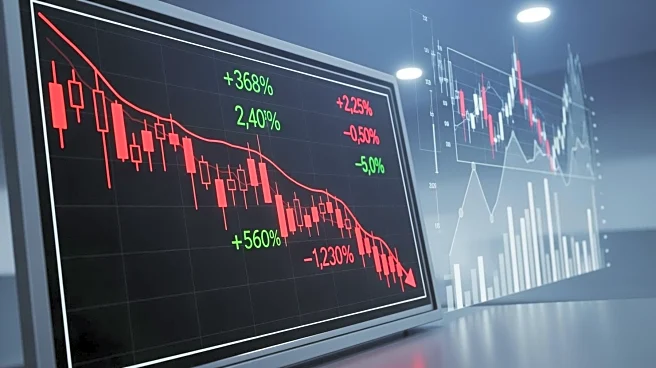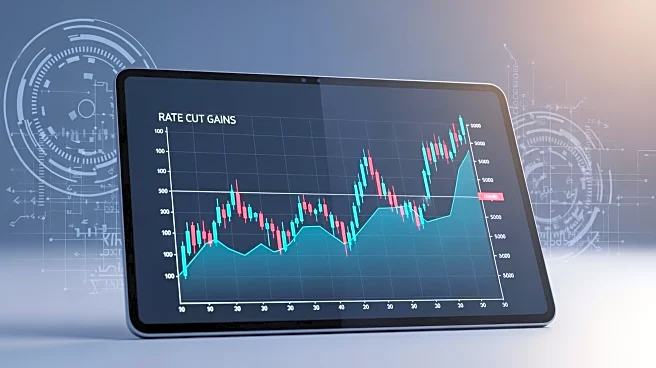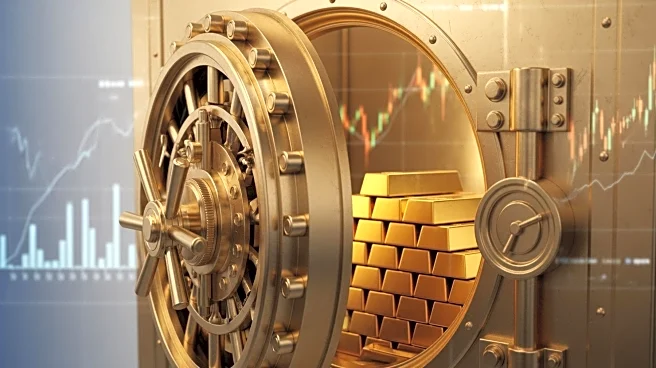What's Happening?
HSBC has raised its 2025 average gold price forecast to $3,455 per ounce, citing geopolitical tensions, economic uncertainty, and a weakening U.S. dollar. The bank projects that gold prices could reach $5,000 per ounce by 2026. This forecast is driven
by sustained geopolitical risks, economic policy uncertainty, and rising public debt. HSBC notes that new entrants to the gold market are likely to remain even after the rally subsides, viewing gold as a diversifier and safe-haven asset. The U.S. Federal Reserve's rate-cutting cycle is expected to support gold prices, although its impact may diminish as the cycle wanes. Gold prices recently hit a record high of $4,378.69, marking the biggest weekly gain since December 2008, fueled by geopolitical and economic uncertainty and growing U.S. rate cut bets.
Why It's Important?
The forecasted rise in gold prices reflects broader economic and geopolitical uncertainties that are influencing investor behavior. As gold is traditionally seen as a safe-haven asset, its increasing value suggests heightened concerns over economic stability and geopolitical tensions. This trend could impact various stakeholders, including investors seeking to hedge against market volatility and countries with significant gold reserves. The potential for gold prices to reach $5,000 per ounce by 2026 indicates a shift in market dynamics, where traditional assets may be favored over riskier investments. This could lead to increased demand for gold, affecting global trade and economic policies, particularly in countries reliant on gold imports or exports.
What's Next?
As the U.S. Federal Reserve continues its rate-cutting cycle, the impact on gold prices will be closely monitored. Investors and policymakers will need to consider the implications of sustained high gold prices on economic strategies and financial markets. The anticipated decline in gold prices in the second half of 2026, as forecasted by ANZ, suggests that clarity on U.S. economic growth and trade tariff policies could influence future market conditions. Stakeholders may need to adjust their strategies in response to these developments, potentially affecting investment decisions and economic policies globally.
Beyond the Headlines
The rising gold prices highlight the ongoing challenges in global economic stability and the role of precious metals as a hedge against uncertainty. This trend underscores the importance of diversifying investment portfolios and the potential long-term shifts in asset preferences. The geopolitical and economic factors driving gold prices may also lead to increased scrutiny of monetary policies and international relations, as countries navigate the complexities of economic growth and trade dynamics.














